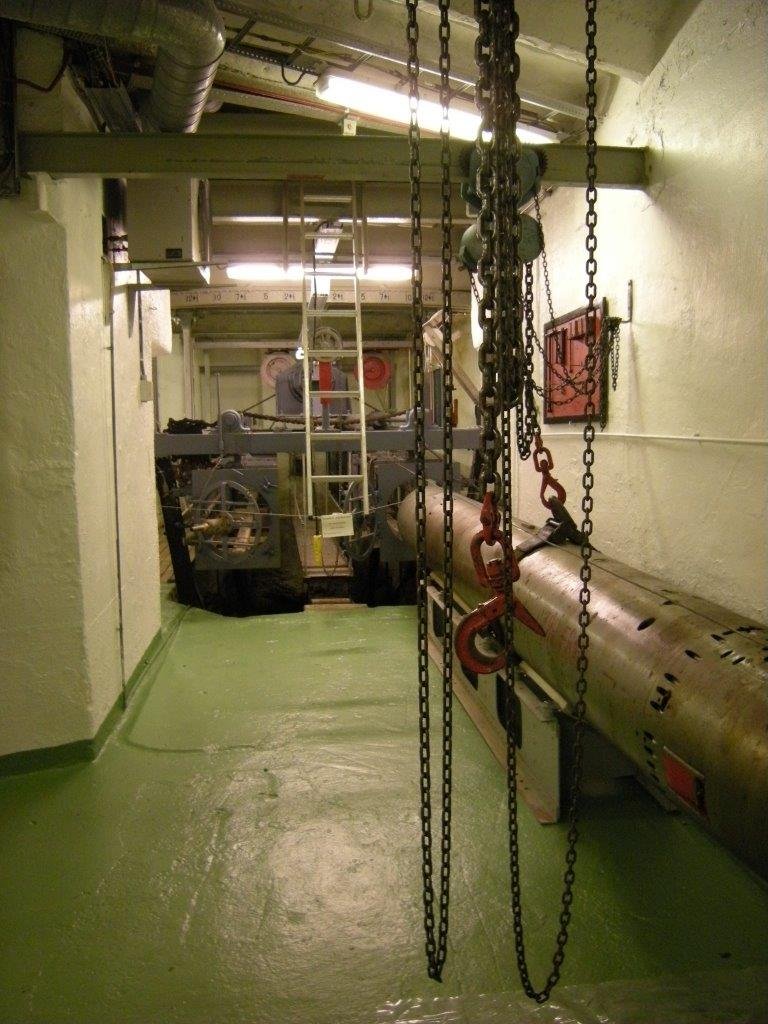Oscarsborg Fortress
Get to know Oscarsborg Fortress and its unique architecture and history!
You can access the map through QR codes placed around the fortress, using a QR code reader/scanner application on your phone.
Oscarsborg Fortress is managed by the Norwegian Defence Estates Agency National Fortification Heritage.
Enjoy!
East Shore Battery
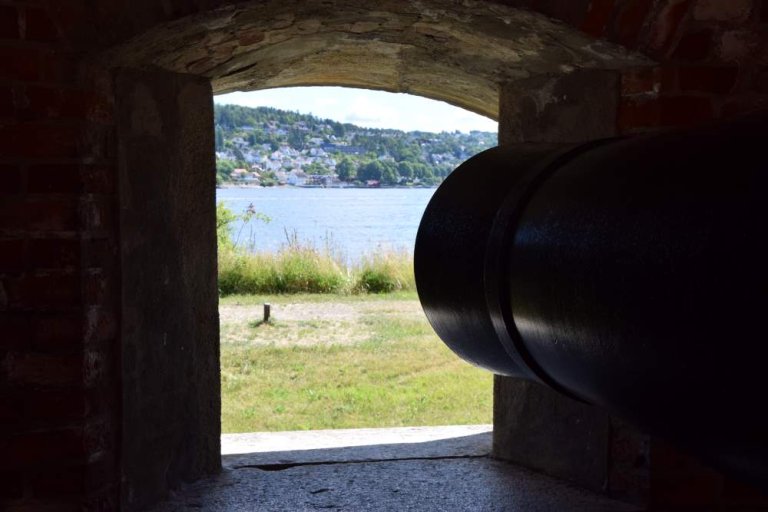
You are now at the East Shore Battery, which is an artillery emplacement.
The battery was intended to guard the shipping lane to the east of the Kaholmen islets.
The East Shore Battery, which dates back to 1848, has a total of ten casements in which artillery guns could be positioned.
The tunnel is open to the public, and you will see four guns in the casements in the northern part of the building. There is a rifle gallery along the back wall.
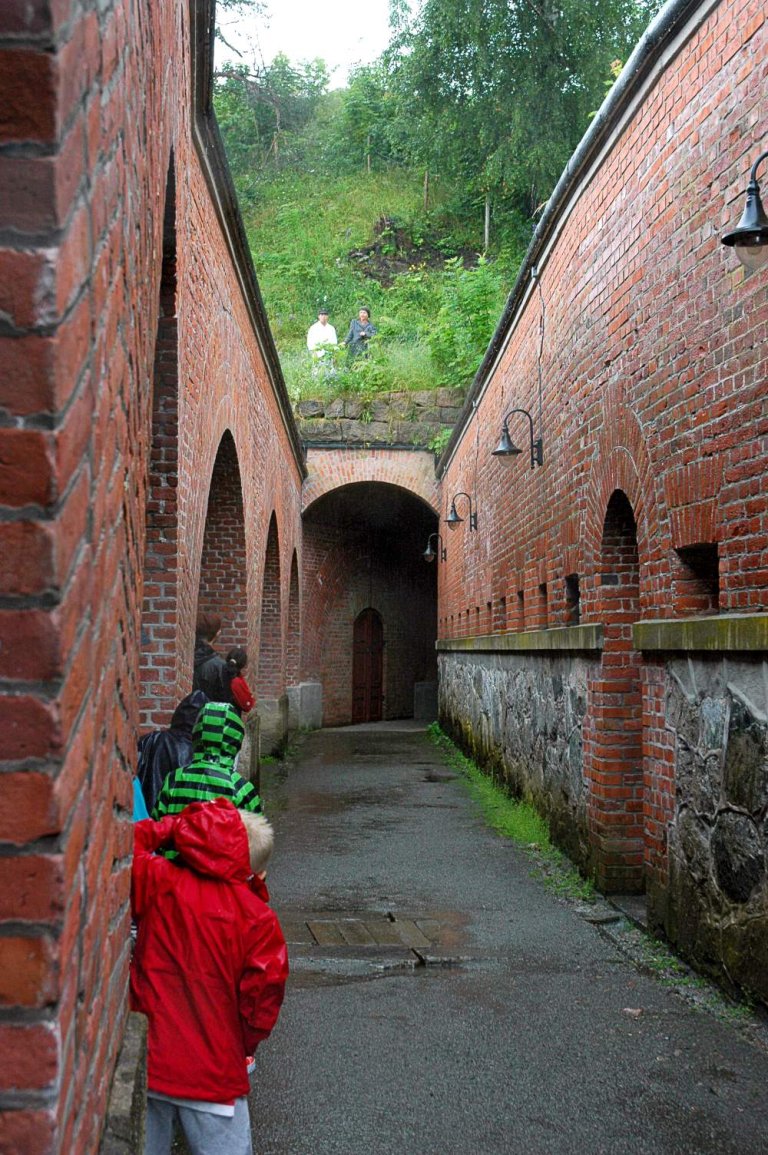
The tunnel continues up to the main fort.
Last bastion
The East Shore Battery and the corridor was the last bastion of defence for the main fort. There were limited ways to defend yourself in the rifle gallery and the niches up towards the main fort.
The corridor is curved to make it more difficult for the enemy.
However, the niches provide only a minimum amount of protection, and the soldiers who were stationed here would have been well aware of their situation.
Start point for strolling theatre

The Eastern Shore Battery is the start point for the "Oscarsborg in battle" strolling theatre performance that takes place every summer.
The strolling theatre takes you through the fortress’s underground passageways and allows you to experience the events of 9 April 1940, when the German battleship Blücher was sunk on its way into the Oslo Fjord.

Main Fort and Courtyard
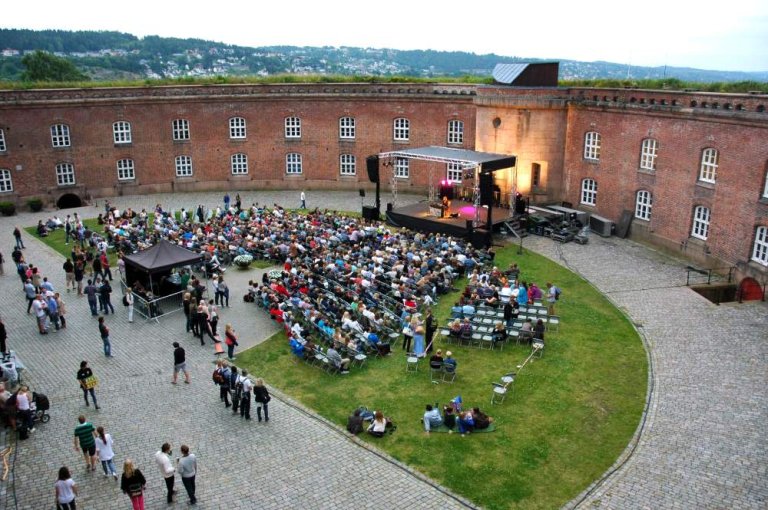
The Main Fort and the courtyard - where old and new times meet.
The Main Fort was built between 1849 and 1856. The fortress was completed in 1853, and was named in honour of King Oscar I, who visited on 23 August 1855.
Oscarsborg was regarded as Northern Europe’s most modern fortress when it was new.
In battle only once
The only time the fortress was ever in battle was on 9 April 1940, when the Germans attacked Norway. The main fort and fortress were bombed by German planes for several hours. Traces of the bombing are still visible on the walls.
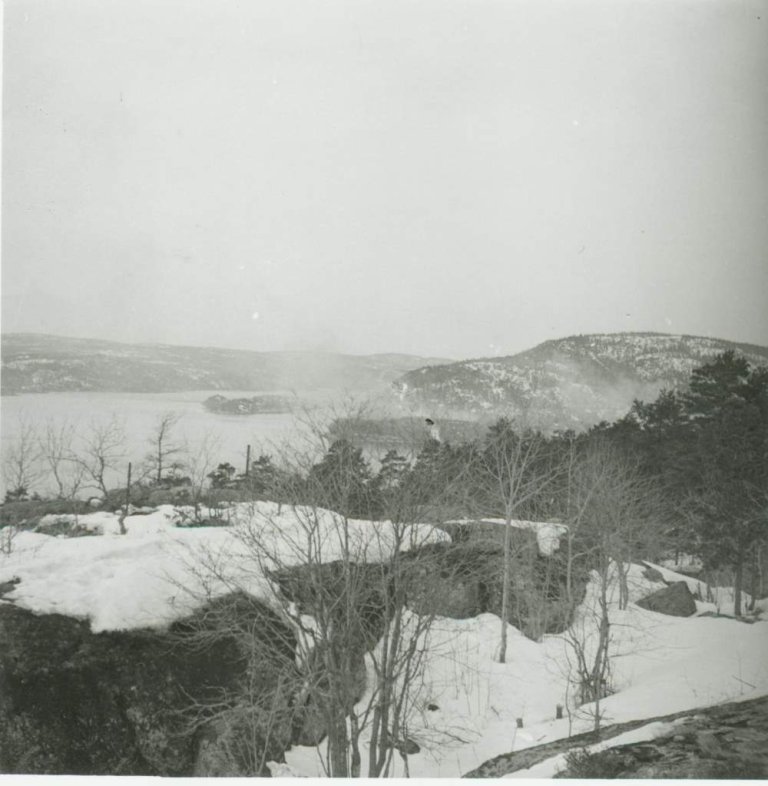
No one was killed or injured
None of the fortress’s personnel were killed or injured in the attack. They hid in the old underground passages under the fortress.
New life on historic ground – venue for culture
One of The Norwegian Defence Estates Agency’s missions is to facilitate new use in cooperation with external stakeholders. Many activities take place at the fortress throughout the year: theatre, opera, concerts and art exhibitions.
Oscarsborg has also been selected as one of Akershus County’s ‘cultural lighthouses’.
The courtyard is an important venue for culture, and almost every year ‘OscarsborgOperaen’ stages opera performances here.

The music festival ‘Oscarsborg Akustiske’ is now well established as a popular festival at the fortress.
The main fort contains the Oscarsborg Fortress Museum, Gallery Oscarsborg, as well as function rooms and restaurant facilities.
Well maintained
Between 2012 and 2014 the exterior of the main fort was restored. It was a massive undertaking, and cost NOK 58 million for the entire fortress. During the attack on Oscarsborg on 9 April 1940, parts of the roof were destroyed. The roof has also been restored.
The Jetty
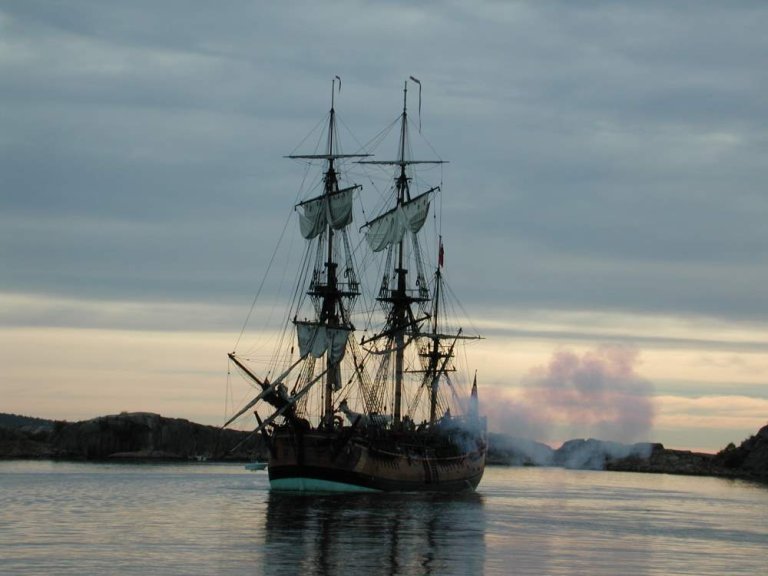
About 400 metres from this shoreline is the jetty – a long underwater wall from the skerries of Hurum via Småskjær to the islet of Søndre Kaholmen on which you are standing.
It is located under the water so you can not see it, just imagine.
Part of the defences
The wall was built as part of Oscarsborg Fortress, and was designed to prevent large vessels from sailing into the sound towards Håøya island, on the east side of the fortress.
A small opening has now been made in the jetty near Hurumlandet, and another south of Søndre Kaholmen to allow small boats to pass.
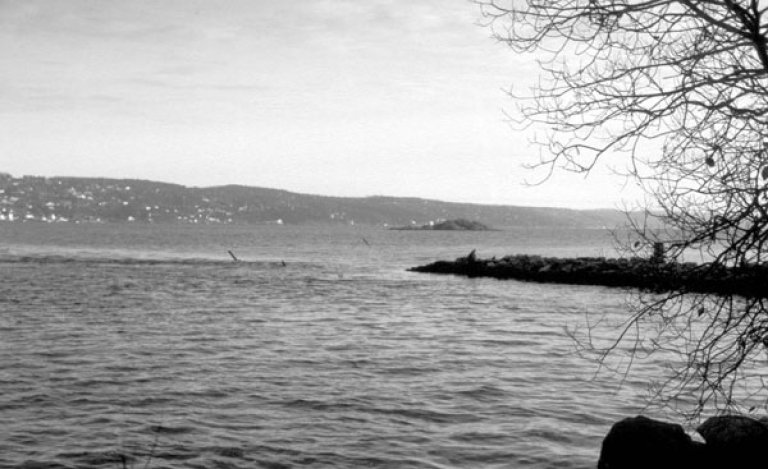
Solid
The jetty was built between the years of 1874–79, and is about 1,500 metres long and 25 metres high in some places. Its upper edge is about 4 metres thick.
It was filled with about 315,000 m3 of stone blocks, each weighing up to a tonne, and took four years to construct. The material was freighted in on barges from Røyken.
Well-maintained sea walls
Have a look at the walls along the water’s edge.
Some of the walls constructed around the fortress are extremely impressive.
However, through the years, many of these have been damaged by the sea. In very heavy seas, the material used to fill the walls becomes loosened, and stones fall down into the water.
The Norwegian Defence Estates Agency has recently been repairing the most critical sections.
West Crane Wharf and Håøya island
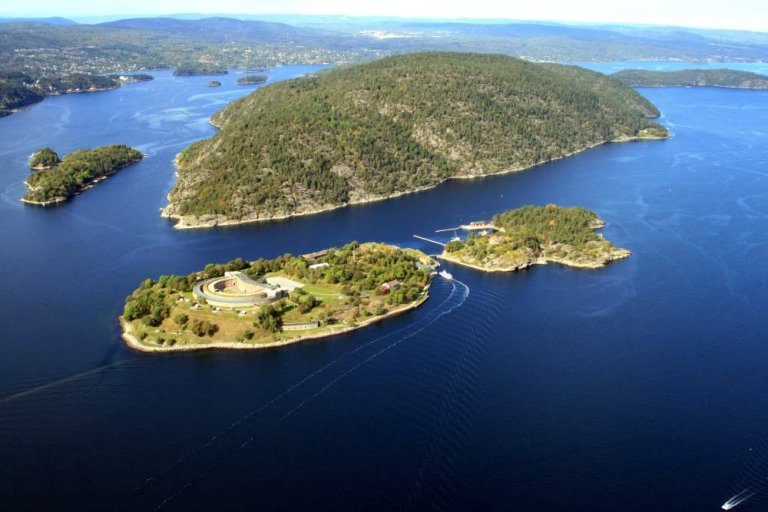
The West Crane Wharf
The wharf was built in 1862 to enable ammunition to be brought ashore. This ammunition was then transported through a tunnel (West Shore Battery) to the Main Battery’s underground arsenal.
The wharf is the fortress’s only deep water quay and is used by larger vessels.
Håøya island
Directly across the fjord you can see the big island, Håøya. There are several facilities on Håøya that are also part of Oscarsborg Fortress. These include two canon batteries – the Lower Top Battery and the Haubitz Battery – both built in the 1890s.
In winter 1942, during WWII, six young men were executed and buried on Håøya by the germans.
Every year on 8 May, Liberation Day, a dignified and atmospheric commemoration is held on this site.
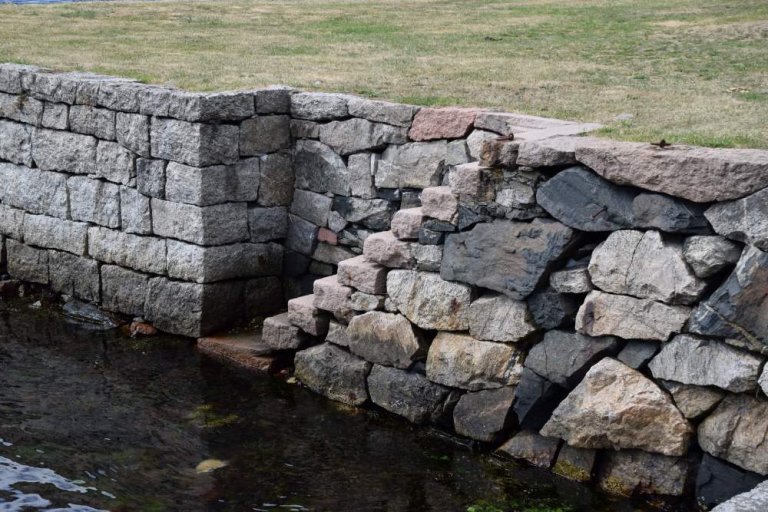
Fort Courtyard
You are now standing in the fort’s courtyard, in front of the statue of the commandant, Colonel Birger Eriksen.
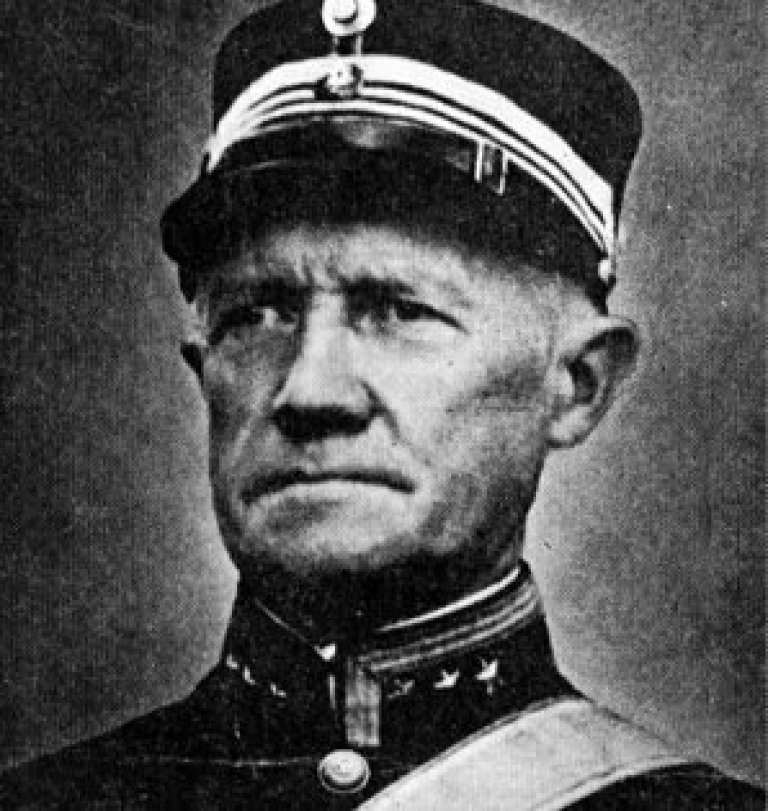
During the German attack on Norway in the early hours of 9 April 1940, Oscarsborg Fortress and its commandant became part of Norwegian history.
Vital delay
By engaging the German armada in battle, the fortress created a vital delay, which made it possible for the royal family, Parliament and the government to escape to London. Oscarsborg Fortress was bombed by German planes for several hours.
You can experience more of what happened on that dramatic night in 1940, and learn more about the rest of the fortress’s history in the Fortress Museum in the Main Fort.
Memorial plaque
Here at the fort courtyard you can also see the memorial plaque that honours men of the coastal artillery, who lost their lives in World War II.
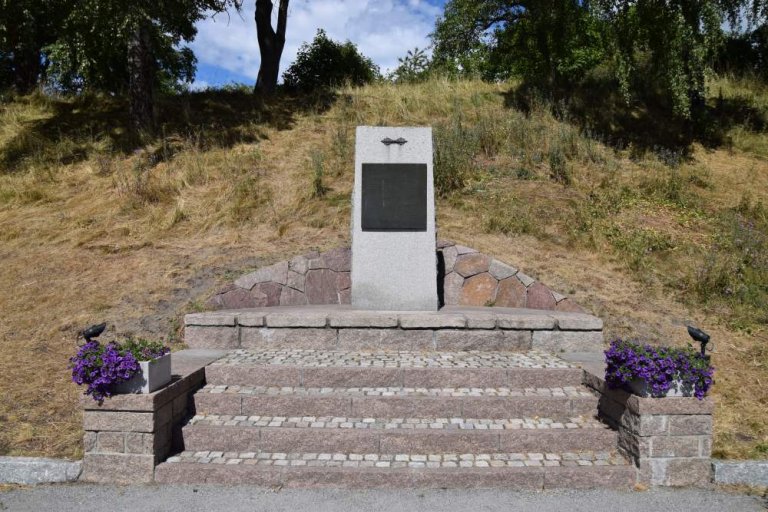
Concert venue
The fort’s courtyard was originally used as a drill and parade ground for soldiers, but one of its many uses now is as a concert venue.
Main Battery and the attack on Norway – 9 April 1940
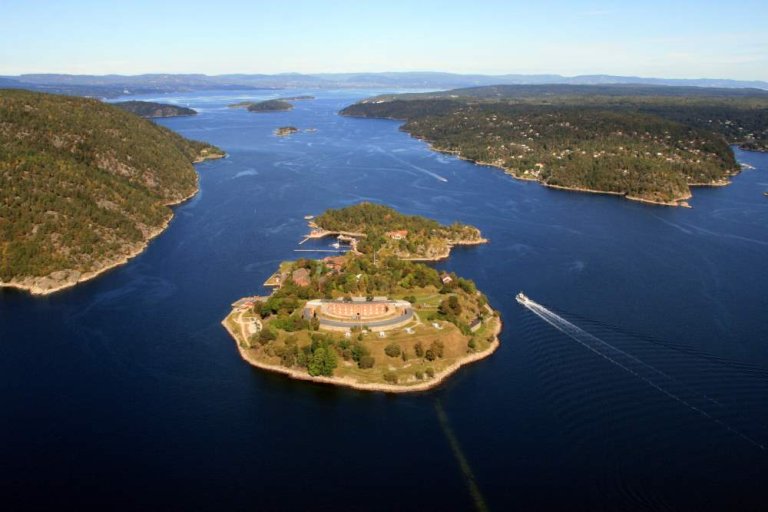
You are now standing beside the fortress’s Main Battery and the guns that opened fire on the German battleship Blücher at 04:21 on 9 April 1940.
The Blücher was hit, but not sunk.
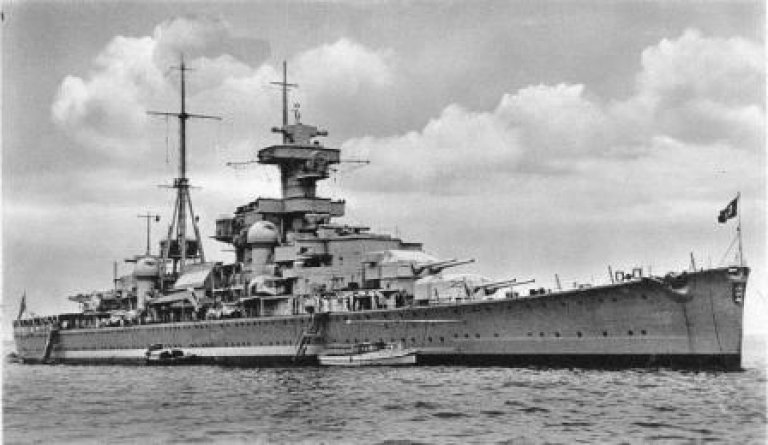
The artillery guns were named Aron and Moses, so paradoxically enough, the enemy was driven off by German guns with Jewish names.
The Blücher drifted on and was hit by two torpedoes from the torpedo battery. The ship sank just off the island of Askholmen.
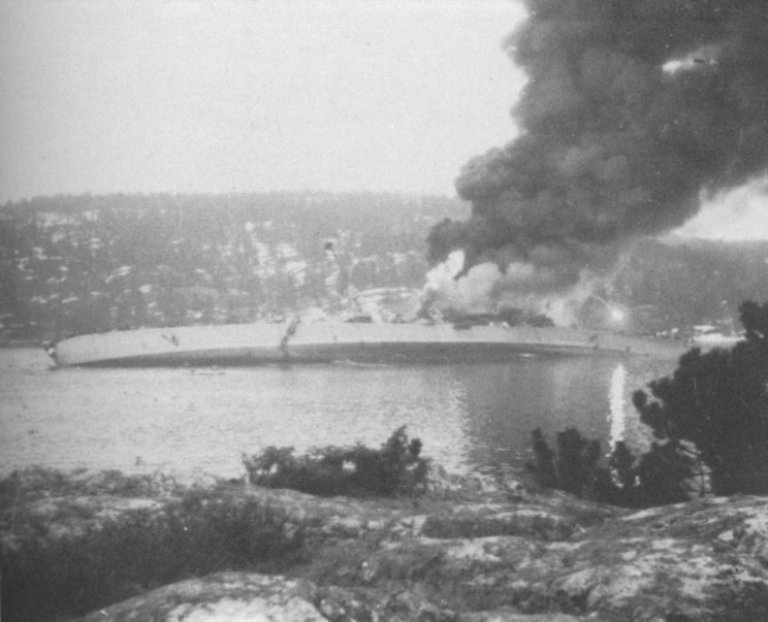
The King
The watchtower up on the “King” served as both lookout post and flag post for Oscarsborg Fortress.
The first watchtower probably consisted of a primitive wooden tower with a platform.
Soldiers would keep an eye on ships plying the Oslo Fjord and fly the Norwegian flag from the highest peak of the island.
The present watchtower was built in 1932. The Norwegian flag flew here also on 9. April 1940.
A prestigious target
Although the watchtower represented a prestigious target, it stood its ground and proudly kept the Norwegian flag flying
The kongelunden
You are now standing in the Kongelunden.
The place got its name because so many of Norway's kings have visited the place. You can see the signature of four kings carved on stones.
Oscarsborg Fortress was substantially completed in 1855. Under King Oscar I's visit on August 23. that year, Oscarsborg got its name. In Kongelunden we find the names of other kings who visited the fortress, including King Oscar II, Haakon VII, Olav V and Harald V.
Commandant’s Residence
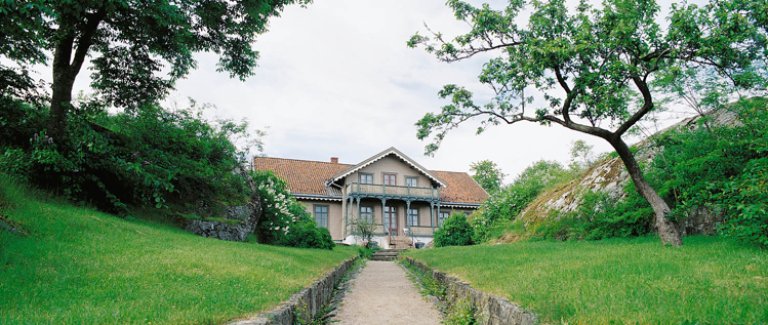
You are now standing in front of the Residence of the Commandant of Oscarsborg Fortress.
The Commandant’s Residence at Oscarsborg was probably built in about 1855, and presides over the fortress from its elevated position.
The ornamental garden was the venue for many parties and also a private refuge for the commandant and his family.
New manners and new standards
Through their background, education and position, the commandants tended to be well-bred persons of culture. As well as their officer training, they had been educated in drawing, painting, dance and music.
The commandants often introduced new manners and standards to the local communities in which they were posted. They were often also prominent figures in social circles.
Commandant’s Residence today
Today the venerable building is used by the Norwegian Armed Forces for exhibitions, and was opened in May 2012.
It presents information about the Armed Forces today through an extensive exhibition of photographs from every branch of the Armed Forces.
The Wet Grave

Towards the north, just east of Håøya island, you can see the low Askholmen islets. This is the resting place of the wreck of the German cruiser, the Blücher.
The Blücher was sunk during the German attack on Norway in the early hours of 9 April 1940.
The Blücher was hit by two torpedoes, and both its engines stopped working. The ship sank at 06:22 AM.


Photo: NTB war archive, The National Archives Between 500 and 1,000 German officers and men lost their lives due to the freezing water and a layer of burning oil, but many also swam ashore to the Askholmen islets and the mainland. Around 1,400 Germans survived Blücher doom.
Memorial in the form of oil slicks
The Germans raised a memorial to their fallen on the Askholmen islets, but this was torn down by an American major in the spring of 1945.
However, memorials to the ship are constantly rising to the surface in the form of oil slicks.
Torpedo Battery
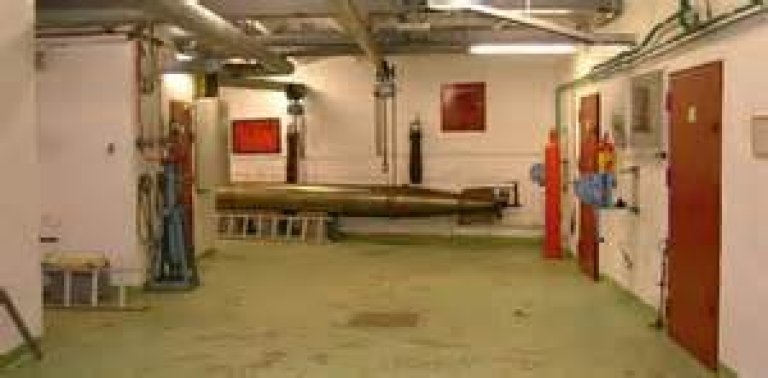
You are now standing in front of the entrance to the Torpedo Battery.
The Torpedo Battery is best known for the fact that it was from here that the torpedoes which sank the German cruiser Blücher were fired in 1940.
The Blücher was hit by two torpedoes, and both its engines stopped working. The ship sank at 06:22 AM, south-east of the Askholmen islets, just north of Oscarsborg.

Upgraded to the highest NATO level
The battery was originally completed in 1900, and has been rebuilt several times. It was significantly upgraded after World War II. The increasing fear of a nuclear attack led to an upgrade of the battery to the highest NATO level.
Museum
The battery was decommissioned in 1993, and is now a museum.
Together with the Torpedo Workshop beside the entrance, a visit to the Torpedo Battery gives an exciting introduction into one of the most ‘secret’ parts of Oscarsborg Fortress.
The Fortress Museum provides guided tours of the Torpedo Battery.
